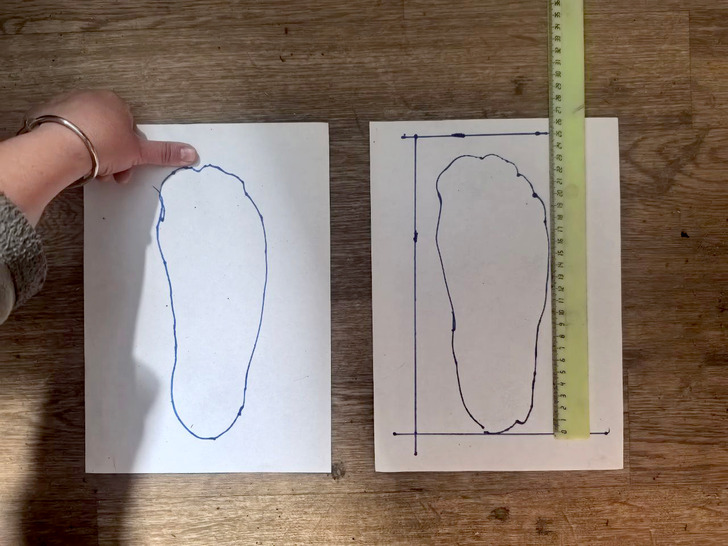The Waitress Shamed Me for Tipping "Only 10%"—But I Turned the Tables

Wearing comfortable shoes is essential, especially if your job requires you to be on your feet all day. Whether you’re a courier constantly on the move or a hairdresser standing for hours, your feet bear the brunt of the workload. If you’re dealing with pain, blisters, or tight-fitting shoes, it’s best to replace them rather than rely on questionable tricks to ease the discomfort.
Even shoes that feel fine at first can cause issues later, and in many cases, the wrong size is to blame. Fortunately, here are 7 helpful tips to guide you in choosing the right pair of everyday shoes that offer lasting comfort. Find special bonus tips at the end!
Many experts suggest trying on shoes at the end of the day, when your feet are more likely to be swollen from daily activity. This gives you a more accurate idea of how the shoes will fit during regular wear.
Check the space around both your big toe and little toe. If either area feels tight or bulges slightly, it’s a sign you should opt for a larger size.
When shopping online, it’s important to take the shoe’s shape into account. Even slightly narrow styles, whether loafers or sneakers, can feel smaller than the size listed on the label. That’s why it’s safer to size up slightly rather than choose a tight fit. For instance, roomy sneakers might feel just right, while narrow espadrilles of the same size could be uncomfortable. Customer reviews can be especially helpful, as many buyers note if the shoes tend to run small.
As for materials, everyday footwear should be made from breathable fabrics to keep your feet comfortable throughout the day. A rubber sole is ideal, as it offers better grip and stability.
A frequent mistake people make is trying on shoes while sitting. This can lead to cramped toes once you start walking or standing, ultimately sacrificing comfort.
To get a true sense of fit, it’s best to try shoes on while standing. Even better, take a few steps to check for any tightness or discomfort. In other words, test thoroughly before committing—better safe than sorry.

Generally, our feet continue to change over time. While not as rapidly as during adolescence, adult feet typically increase by about half a size every ten years. This gradual growth is caused by the ongoing pressure placed on the feet, which leads to stretched ligaments and, in turn, a longer and wider foot. It’s best to measure your feet in the evening, as they tend to swell throughout the day. Shoes that fit in the morning might feel tight by nightfall.
When measuring, always do so while standing, not sitting. Standing gives a more accurate measurement because your full body weight flattens and lengthens the foot. Also, keep in mind that your feet may differ slightly in size. Even if the difference is small, it’s wise to choose shoes based on the larger foot. Any extra space in the smaller one can easily be filled with an insert, such as a silicone pad.
To measure properly, place your foot on a sheet of paper or cardboard—just make sure your entire foot fits. Stand straight with your weight evenly distributed. Trace around your foot with a pen or marker, then mark the tip of your longest toe and the widest part of the inner foot. This additional space is key to ensuring day-long comfort.
Have you ever found a pair of shoes you absolutely loved, only to realize they’re slightly too narrow, while the next size up feels too loose? In that situation, many people convince themselves that the shoes will stretch over time. However, counting on that isn’t a good idea.
Most shoes are made from materials that don’t stretch significantly. While there are rare exceptions, any noticeable widening usually means the material fibers are breaking down, not stretching, which shortens the lifespan of the footwear.
You might wonder why some salespeople say the shoes will stretch. Genuine leather can indeed give a little with wear, but the difference is minimal and won’t make a tight pair feel a full size larger. That’s why it’s best to avoid buying shoes that already feel snug—they’re unlikely to become truly comfortable.
These sneakers offer extra depth, providing enough room to accommodate orthopedic insoles. This added space helps reduce strain on your feet, knees, and hips.
Even if you don’t currently experience discomfort, using orthopedic insoles can be a smart choice, especially if you’re on your feet all day. They can support long-term joint and foot health.
It’s important to think about what you’ll be wearing inside your favorite shoes. Closed-toe shoes or sneakers are rarely worn without socks. If you’ve ever worn shoes without socks, you’ve likely felt the discomfort: sweaty feet, rough seams, and irritation. Even if the shoes seem fine, going sockless regularly can lead to foot problems. That’s why it’s smart to buy good socks along with your shoes.
It’s also a good idea to try on footwear while wearing the type of socks you plan to use with it. Bringing your own socks to the store can make a big difference in finding the right fit.
Thinking of shoes to wear? We got you, check out these shoe trends for this summer through this link.











